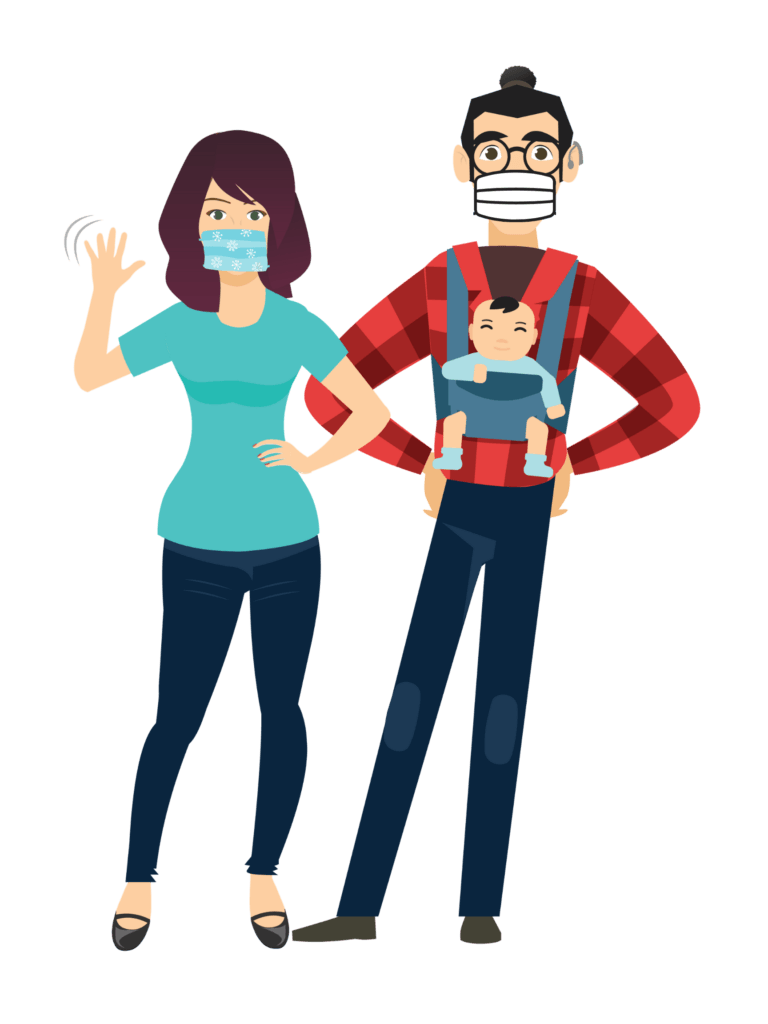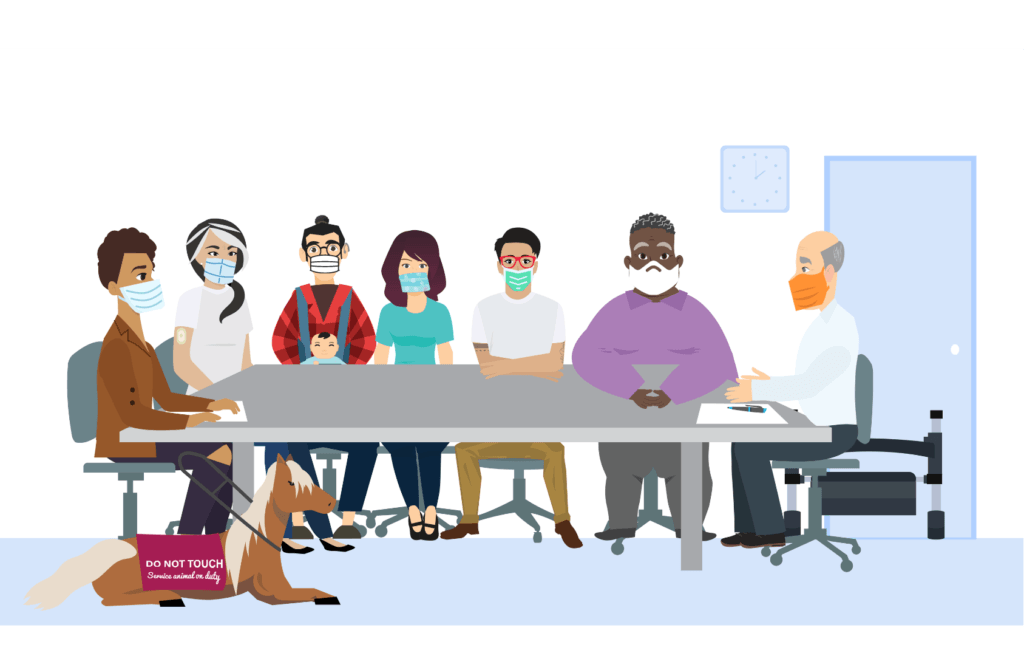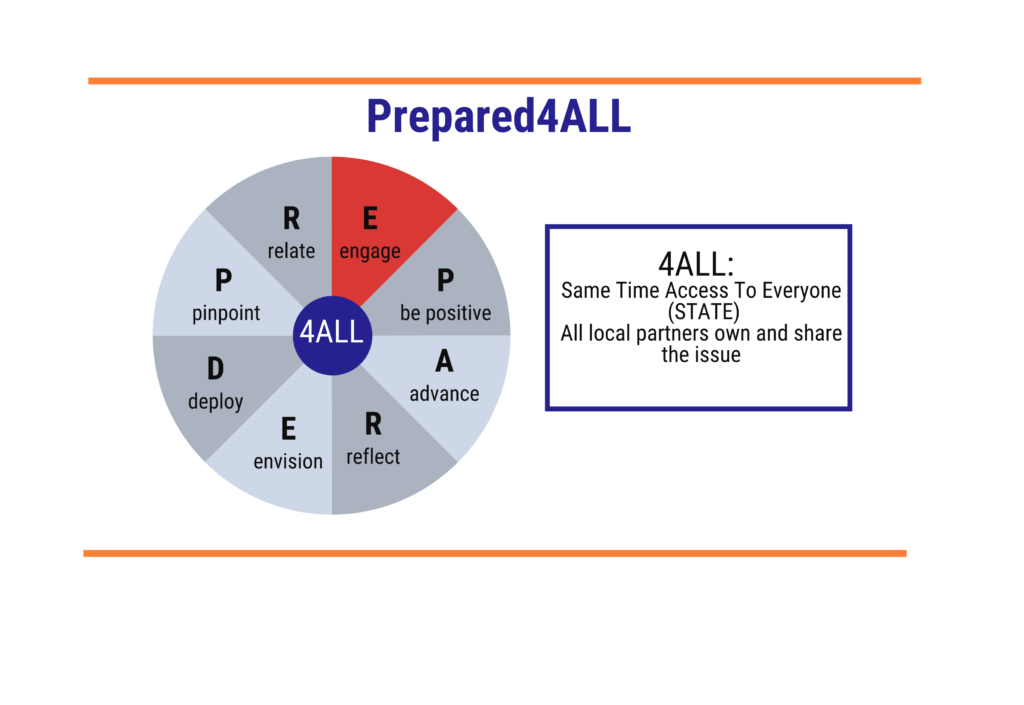Engage _review

Franny [Signing]:The E in Prepared4ALL is for Engage. Your group prepares to engage by reviewing the basics of the American Emergency Planning System. Some people are surprised that there is really a system of systems. Then, your group requests a meeting with the local public health preparedness planner.
?The group thinks of specific questions to ask during a meeting with the public health preparedness planner and emergency manager, such as:
– Does the county have a community-based organization emergency planning advisory group? How can community members participate in local emergency planning?
– What expectations do the emergency and public health preparedness planners have for local organizations and residents?
– How can the group get involved in the work of the local emergency and public health preparedness offices?
– What kind of support might the group offer the planners and the community to be more inclusive?
? What kinds of skills and strengths might a disability organization have to offer local emergency and public health planners?
Feedback
A disability organization could offer to share information about its services and the emergency needs of the local disability community. The organization could offer to act as a liaison with its members to share emergency-related information from the local planners. The organization has a wealth of knowledge about accommodation needs and accessible communications.
Group members also share personal preparedness resources with each other and plan to share the resources with their organization’s employees, volunteers, and those the organization serves. This is also important as emergency and public health planners are likely to talk about the importance of personal preparedness.
The group now thinks of itself as a Prepared4ALL Action Team. The Team requests a meeting with the local emergency and public health preparedness planners. This may be one or two meetings, depending on the community and the relationships between the planning offices.
The Team focuses on meeting with the public health planner first in case a request for a joint meeting with the emergency management planner is denied.
The Action Team receives a positive reply from both offices and schedules a virtual joint meeting. One Action Team member requested sign language interpretation from a qualified sign language interpreter. While this would normally be the legal responsibility of the emergency management and public health offices, they report back to the group that they don’t know how to do this. Another Team member explains to the planners the way to request an interpreter and the request is submitted. The person who needs the interpreter is not charged for this service, in keeping with the law.

Before the meeting with the town planners, the Action Team practices their outreach script talking points, questions, and the ways they can offer help and work together. The Team practices how it will introduce its members and who will speak for the group.
Through questions and conversation, the COVID-19 vaccine emergency dispensing site (EDS) planning gaps are identified during the meeting:
Physical Access
– The sites have not been checked for physical accessibility
Program and Policy Access
–There is a plan for the EDS process, from arrival to sign-in and receiving the vaccine, but it has not been reviewed for inclusiveness.
– There is no provision for people who might need extra support or quiet space away from sensory stimulation.
– The planners don’t know if the public health professionals and EDS workers/volunteers have been trained on disability-related issues and accommodations.
Effective Communication Access
– Signage has not yet been created. There is no accessibility or plain language plan for the signage.
–There is no non-English language or qualified sign language interpretation plan.
– No decision has been made about messaging. There are questions about how to encourage vaccination, which communication formats to use, message content, and how to make the messages accessible and understandable so people know what to do.
The planners ask for the Team’s help in addressing the gaps. Both the Action Team and the planners agree to think about possible solutions and the group plans to meet again to talk about them. In the meantime, the planners agree not to move forward with signage and messaging and to find out more about site accessibility. They agree to send the Team copies of the current EDS plan. The Team asks the planners to think about similar situations, like flu clinics, and what solutions have worked before.
They ask for copies of any “hotwash” discussion notes and “After Action Reports,” (AAR) which the planners send. Hotwashes usually happen right after an EDS or disaster to debrief and After Action Reports are written after more research and discussion.
The planners caution the team that they don’t have a lot of time or money to make big changes, but the planners do continue to think about the gaps after the meeting. They speak with the county Americans with Disabilities Act (ADA) Coordinator who finds someone knowledgeable to review building accessibility and identifies county funding for sign language interpretation.
The planners email the Team with an update.
Click the quiz link below to check your learning and continue.

